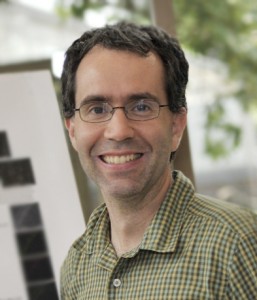Royer Finds Climate Could Soon Hit a State Unseen in 50 Million Years


New climate research by Dana Royer, professor and chair of earth and environmental sciences, finds that current carbon dioxide levels are unprecedented in human history and, if they continue on this trajectory “the atmosphere could reach a state unseen in 50 million years” by mid-century, according to an article in Salon.
The carbon dioxide levels in the atmosphere today are ones that likely haven’t been reached in 3 million years. But if human activities keep committing carbon dioxide to the atmosphere at current rates, scientists will have to look a lot deeper into the past for a similar period. The closest analog to the mid-century atmosphere we’re creating would be a period roughly 50 million years ago known as the Eocene, a period when the world was completely different than the present due to extreme heat and oceans that covered a wide swath of currently dry land.
“The early Eocene was much warmer than today: global mean surface temperature was at least 10°C (18°F) warmer than today,” Dana Royer, a paleoclimate researcher at Wesleyan University who co-authored the new research, said. “There was little-to-no permanent ice. Palms and crocodiles inhabited the Canadian Arctic.”
Royer’s paper was published April 4 in Nature Communications and widely covered in the mainstream press. The implications, writes Salon, “are some of the starkest reminders yet that humanity faces a major choice to curtail carbon pollution or risk pushing the climate outside the bounds that have allowed civilization to thrive.”
According to an article in U.S. News & World Report:
CO2 levels in the atmosphere have varied over millions of years. But fossil fuel use in the last 150 years has boosted levels from 280 parts per million (ppm) before industrialization to nearly 405 ppm in 2016, according to the researchers.
If people don’t halt rising CO2 levels and burn all available fossil fuels, CO2 levels could reach 2,000 ppm by the year 2250, the researchers said. CO2 and other gases act like a blanket, preventing heat from escaping into space. That’s known as the greenhouse effect, the researchers explained.
But the researchers note that CO2 levels are not the only factor in climate change; changes in the amount of incoming light also have an affect, and nuclear reactions in stars like the sun have made them brighter over time. Royer says this interplay is important:
“Up to now it’s been a puzzle as to why, despite the sun’s output having increased slowly over time, scant evidence exists for any similar long-term warming of the climate. Our finding of little change in the net climate forcing offers an explanation for why Earth’s climate has remained relatively stable, and within the bounds suitable for life all this time.”
Royer also is professor of environmental studies, professor of integrative sciences. See more coverage in Science Daily and International Business Times.

